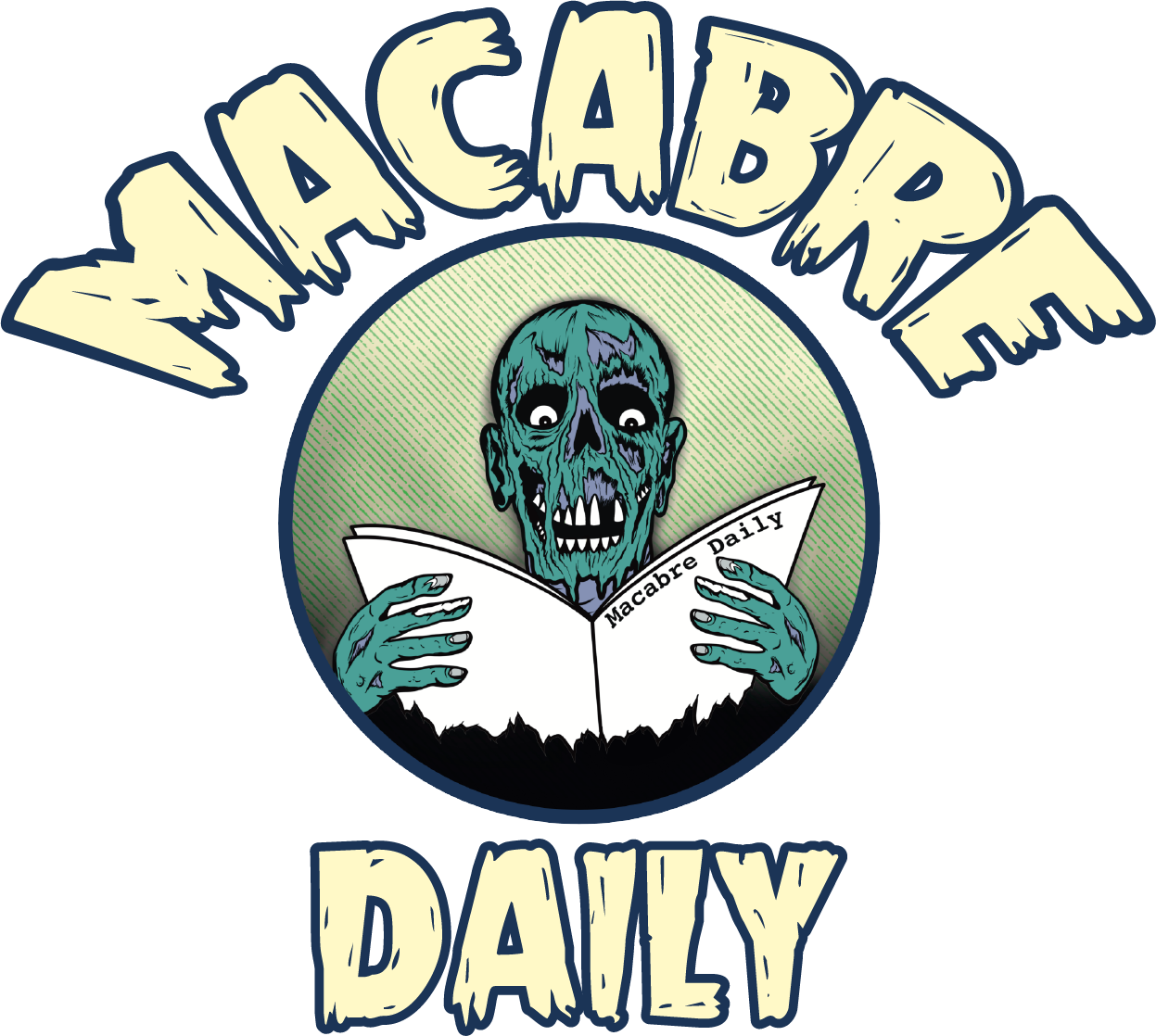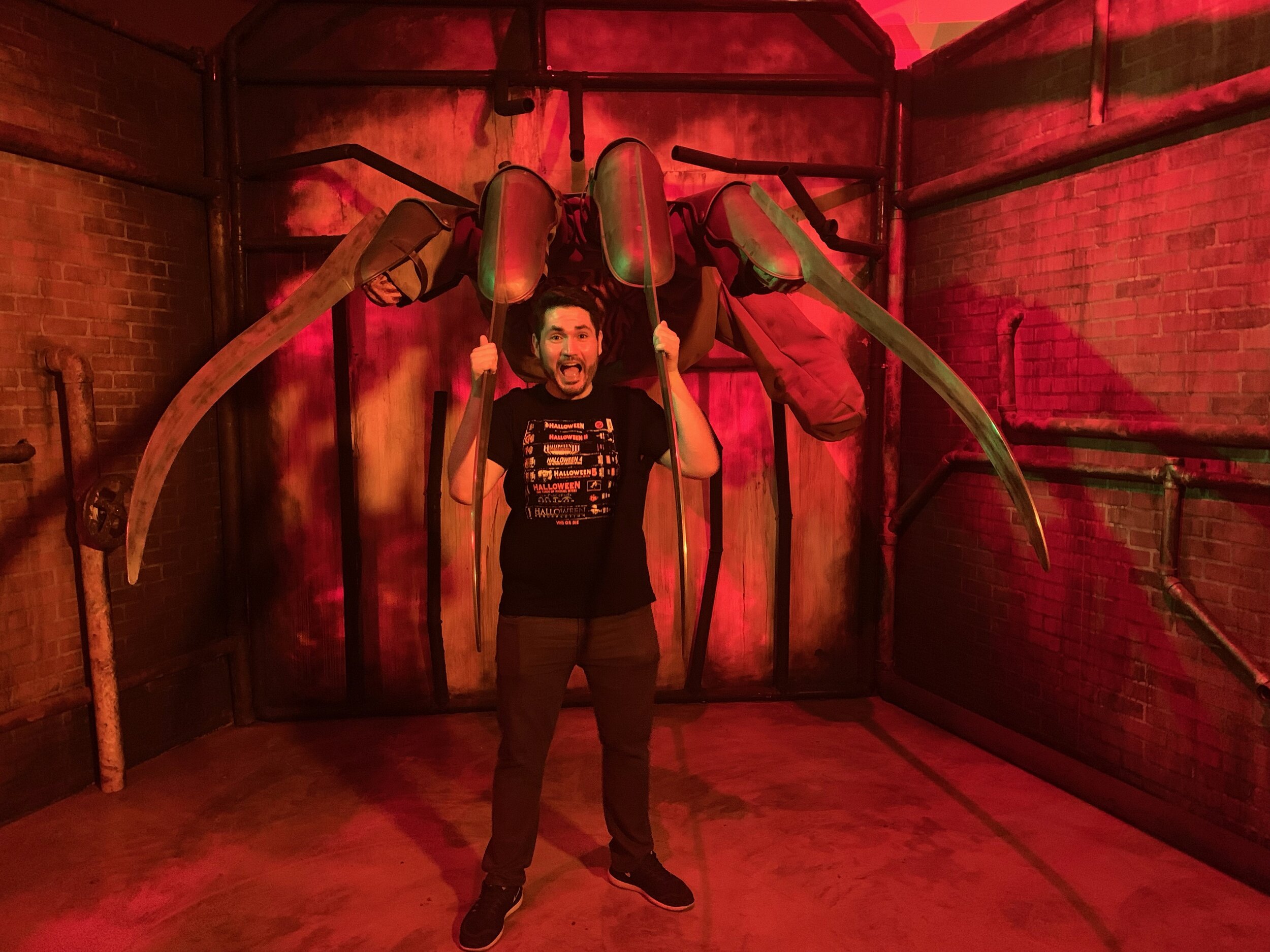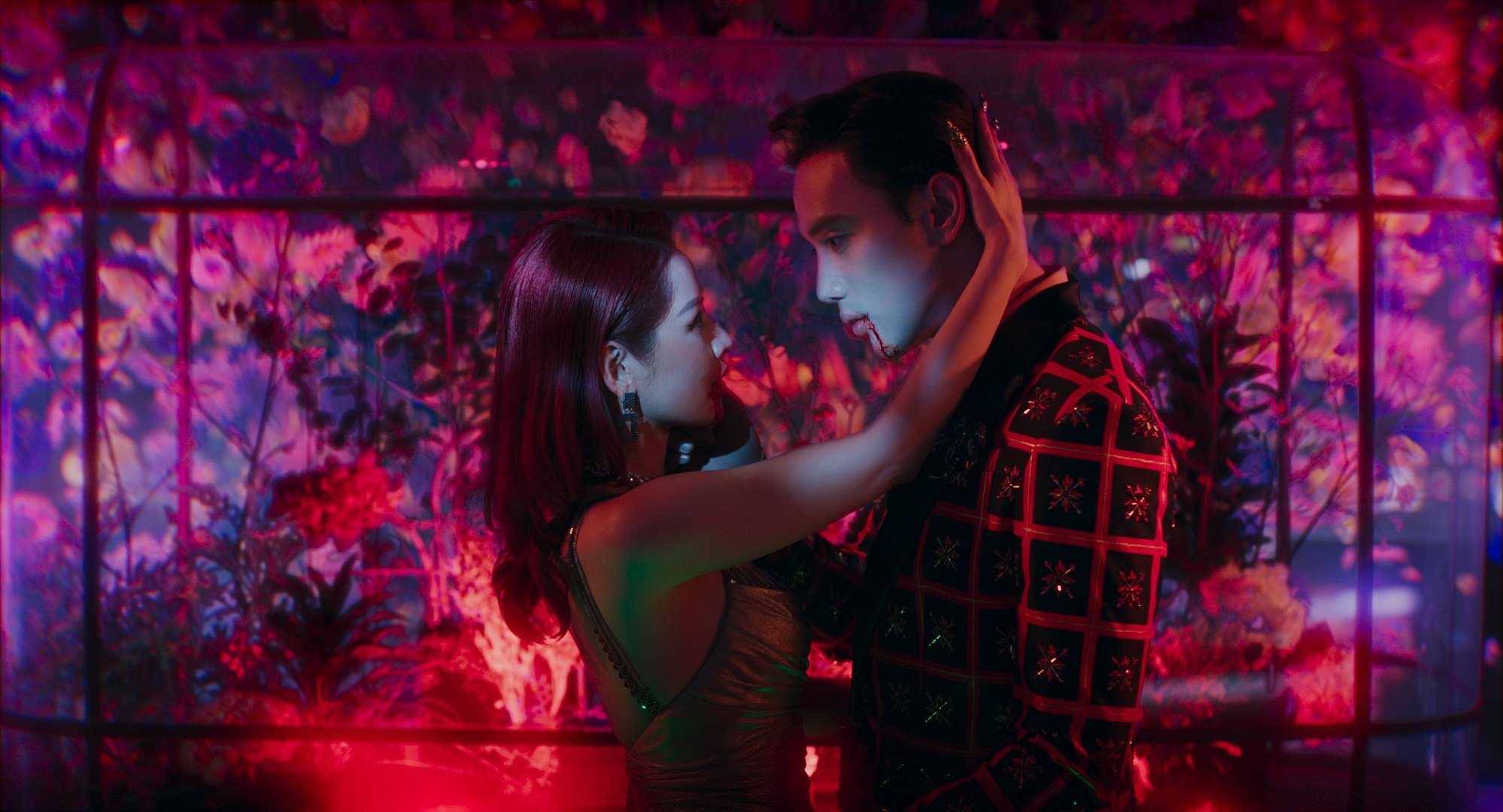FANTASTIC FEST 2024: Isaac Ezban Talks About Making Zombies Family in "PÁRVULOS" (INTERVIEW)
As the sun shines down on the city of Austin, TX with it so do the lights of the Alamo Drafthouse in South Lamar for the 19th annual Fantastic Fest! For eight days, some of the best genre films worldwide will showcase the current and future talents in genre filmmaking while celebrating some classics in new, revitalized restorations. This year, Macabre Daily was fortunate enough to have some boots (well, one person) on the ground basking in the glory of all the genre has to offer. As part of our coverage, we will post reviews, interviews, and previews of upcoming films and games taking center stage here, including some exciting new horror games from the indie studios showcased in Fantastic Games presented by Day of the Devs! We are honored and privileged to be here, thank you to our partners at Fons PR, and now let’s get to the good stuff with an interview with Isaac Ezban (Writer + Director), of “Párvulos” (read our review here)!
*** Please note: This interview has been edited for clarity and some grammatical errors may persist"***
Macabre Daily: Hello fiends, friends and familiars this is Matt Orozco with Macabre Daily. And I am joined by Isaac Ezban, who is the writer and director of “Párvulos” which had its US premiere here yesterday at Fantastic Fest. So Isaac, thank you so much for taking some time to speak today.
Isaac Ezban: Oh, thank you so much. And I'm very happy to be talking about this film! Thank you for the time.
MD: Well, first and foremost, how has the Fantastic Fest experience been for you so far?
IE: Fantastic Fest is one of the coolest festivals in the world. I've been coming here, this is my fifth time in the festival. But I think I started coming in 2013 when I didn't even have a movie. I came for the fantastic market, where they used to have like pitches for projects, and that's how “The Incident” came to be. And I came here in 2014 to present a complete film. And I came in 2015 with “The Incident”, and I came in 2022 with “Evil Eye”. And now here, so it's, it's, it feels like home to me. You know, every festival has its its charm, but to be able to come back to a festival that has treated me and my work so well, where people know me, and people approach me and say, “Oh, this is all your movies here.” So to be able to come back to this festival presenting what I believe is the film I feel the proudest of more my most accomplished work, yet it's like a very just like a very gratifying experience. And also, you know, I love the rest of the programming, all the movies I'm watching, the people, although the distribution strategy which my distributors are here, so talking about how to take this movie to the next level, all that is an exciting time.
MD: It's a good reminder to filmmakers, especially in independent realm, to keep at it right? Going back to “Párvulos”, what was your inspiration for the story? It feels like a very personal film.
IE: It's many different things. You know, you can always track back, like the inception of an idea, like the very first thought you have. And it actually happened here in Fantastic Fest. I remember I watched, you know, they have a Secret Screening, and you always can guess, oh, it's going to be either this or this or that. It's like big studio movies. But at one time, the Secret Screening was “Goodnight Mommy.” And that movie, I hadn't heard of it at all. It was just coming out of TIFF. Nobody knew what the movie was about. And you know, whenever you watch a movie, you always know kind of what's gonna be about, because you read the blurb about this movie, but I started watching it completely unaware of what was the movie about. And I saw just these kids like in the middle of the wilderness and not knowing where their parents are. And I was so blown away by that movie. It was one of my favorites of the year. And I said to myself, “I want to make a movie just like that, where you have kids in the middle of the house that that you're unsure of what's actually going on with them.” And I really wanted that essence in a movie, right? So first, there was that inception of idea. Then I love coming of age stories where kids begin as kids and end up becoming adults. And I really admire that, you know, great creators of coming of age films from Stephen King to to Spielberg to someone like the (Guillermo) Del Toro, who made “The Devil's Backbone”, which is one of some of my favorite movies. And then I really started tweaking with the with the theme of infected, where I always feel, of course, we've seen a million movies about zombies or infected, but they always, they are always about the same thing, infected, invading cities and houses. And I feel they never, they never talk about, for me, what is the most interesting theme of movie, how would it affect people? Which is, what would happen if a loved one gets infected? Would you take care of a person? Would you kill a person? Some movies talk about that as a joke, like “Shaun of the Dead”, right? And there are some movies like “Maggie” with Schwarzenegger that have dealt with that, but very few of them. So when I when I realized that this was a completely unexplored theme, I said to myself, Okay, I want to make a movie about infected from the point of view of children taking care of their infected parents. So that was the whole genesis. And also the reason why this project kept growing on me is because when a movie takes so long to get made, you also grow as a person and change in your life. And for example, this movie, when I first wrote it in 2016 it's everything I just mentioned, like coming of age. It. That's why I felt the movie was personal. And then a few years later, I said to myself, No, this is personal because I come from a family of three brothers, so this is the story of my brothers and I, I even asked my brothers, do you think people are going to feel like we had a weird childhood? And they said, like, no, it's just a movie about three brothers that share a good bond. And then I became a father in 2017 when my daughter Naomi was born. So then I said myself, this is a movie about parenting. That's what the movie is about, and about the universal truth of how parents become children and children become parents. But then I did “Evil Eye” i which is a very female, driven coming of age. And then I said to myself, no, actually, this. The reason why this movie is personal is because it's like the male brother of “Evil Eye. And then later on, with the years I have now, I see the movie as something else. I mean, it's all that, but it's also it's a movie about a family and about a different family, and I go trying to save a family, which is something I can personally relate to. So that's how it happens with movies that grow with you and become more mature. That's kind of something that happened in this movie a lot.
MD: It seems like the movie became richer over time, right Coming to age movies don't always make it into the conversation with zombie films, and how to survive is that our human biology doesn't change either, so we still experience those same things, but you've had so much experience in different facets of not just filmmaking, you'd also a writer before this. So I'm curious how your previous experiences across film production have informed where you are today with “Párvulos”?
IE: Well, I always say this to my students in Spanish, the more hours of light you have or flight hours in something in terms of filmmaking, what it means the more you understand how you can use all the tools that a director has, from the script to the dialog to the location to the production design, to the costumes and wardrobe, to the actors to the camera, the lighting, the lens and the post production elements, the color grading, the music, the sound design. The more experience you have you learn how to tweak all those buttons so the film is the closest to your vision. So like when I did my very first short, what I had in my mind and what happened is completely opposite, right? And then when I did my first film, “The Incident”, maybe it was closer, but it was still very far apart. Like, for example, I was I had this idea of my mind, how the set was going to look, and then you just arrive on the set, it doesn't look like that. And I know it's also related to budget and possibilities, but the more movies I make, the more I find out I'm learning how to tweak with all these buttons so that the film is closer to what I had in mind. So that's that's the way I would put it, in a practical way.
MD: The more experiences you have, the easier it is for you to know what your vision can look like, right? And you mentioned something around the post-production side of it. And there's a very interesting look to“Párvulos”. I wouldn't even call it monochromatic, but there is a very muted color palette throughout, you know, can you explain a little about what was informing that vision you wanted to put for this stark, very dystopian landscape?
IE: Yeah, of course. First of all, it's an aesthetic choice. I really like as a personal taste how that looks. But that should never be enough reason to keep such an extreme visual decision. Everything you put in a movie, from the music to a sound field color, it has to support the story. So I was really inspired by this movie which is not a horror movie at all, by Anton Fuqua with Will Smith called “Emancipation” that came out. And when I saw that movie, I remember seeing it how it wasn't black and white, but it was a very desaturated palette where you could feel it was a world with no hope. And I told my DP, you need to look at the movie. And he saw it, and he loved it. And it's not only the color, but it's also a whole look that we designed from pre production and tastes and all that. First of all, we used anamorphic lenses. So the anamorphic lenses, they deform all the sides of the frame to the point where it feels more like you are in a children's tale, like in their own world. So that supports the story. Then we put on the camera. Black promised filter. The black promised what it does. It it explodes the highlights, so it looks like more bright. So it's something like I remember, like the cinematography of Richard Kelly's “The Box”, a movie I really, really love that has that essence. Or even, like Bruno Delbonnel in the Coen Brothers movie “Inside Llewyn Davis”, it also looks like that, you know. So I'm talking about movies that are not horror, but that have that quality where it feels like, like magical, and taking into my story, the highlights being blow up like that, it makes it feel like you're in a magical world. And then in terms of the color, we wanted it to feel like a world where there's no joy, no hope, no cheerfulness, so therefore, no color. But I didn't want to do it black and white. Black and white just feels, I'm afraid. I want to seem like pretentious, you know, I think, I mean, if you're Robert Eggers and you're making “The Lighthouse”, you can do it. But I feel with a movie like this, I wouldn't find a way to justify the black and white. I just wanted to feel like there is color because there is hope, what is hidden, it's very far. But then where is the hope in all, in everything that comes from other worlds or from the past. So every time they look at a photo or every time they see a movie or they had see their drawings or the book they're reading, those are windows to other worlds. That's where they find hope. So all those things are in full color, so it's a good contrast. Maybe it's very on the nose, maybe it's very obvious, but it's using color to tell the story. It's using color to tell the story. And I really like I was reading the reviews from last night, and somebody just made a review in letterbox that is three words review, and I love it said memories are brighter, which is the way it works in life. So it's a way to use color to make the movie a little bit more profound and deep.
MD: I think it also adds a lot to just the visual experience of watching it so that you get to pick up on those notes. My last question for you is a quick one, if you were asked to program a double feature with “Párvulos” what film would you pick?
IE: Not mine, right? If it's whatever you want, oh, if it's mine, I'll put “Evil Eye”, okay? You know, when I made “Evil Eye” and then this, I said, “Well, it's like when Clint Eastwood made “Flags of our Fathers” and “Letters from Iwo Jima”. Like the two perspectives of World War Two. I want to make like epiphany, the coming of age, because “Evil Eye” is a very feminine coming of age where all the male presence are very tiny and just in serve in service of the story “Párvulos” is the opposite. It's a very male driven coming of age where the female presence are very small. That's if it was a movie, fine, if it, what, if it wasn't a movie of mine, if it wasn't like, like, anyone's movie, or I put like, maybe “The Devil’s Backbone” or maybe “Goodnight Mommy.” Like, Day of the Dead, where you have like, the is one of the is one of my favorites from Romero, because you also see how they are, like training the infected and all that. And that was a big influence, also for this.
Stay up to date with “The Dark Side Of Pop Culture” by following Macabre Daily on Instagram, Facebook, and Twitter.














